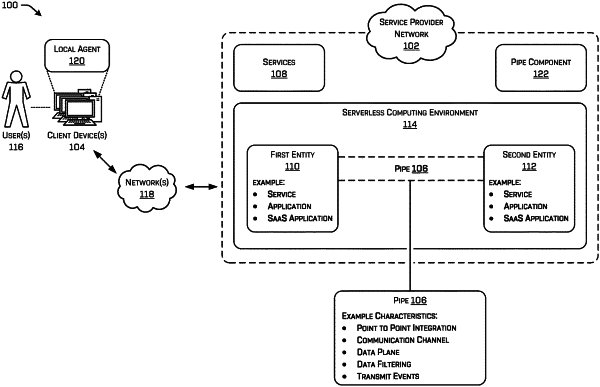| CPC G06F 9/542 (2013.01) [G06F 9/30079 (2013.01); G06F 9/544 (2013.01); G06F 9/546 (2013.01)] | 20 Claims |

|
1. A system comprising:
one or more processors; and
one or more non-transitory computer-readable media storing instructions executable by the one or more processors, wherein the instructions, when executed, cause the one or more processors to perform operations comprising:
receiving first data indicating a first event service as a source for sending event data associated with an event, the event representing a change in a resource state;
receiving second data indicating a second event service as a target for receiving the event data associated with the event;
receiving third data indicating a queue for storing the event data;
configuring a pipe between the first event service and the second event service based on the first data, the second data, and the third data, the pipe representing a virtual communication channel for sending the event data associated with the event, the pipe disposed the first event service and the second event service independent of receiving computer-readable instructions from a developer implementing the first event service;
determining an occurrence of the event at the first event service;
determining, based on determining the occurrence of the event, that the first event service is unable to send the event data to the second event service; and
storing, based on determining that the first event service is unable to send the event data, the event data in the queue for sending to the second event service at a later time.
|